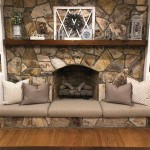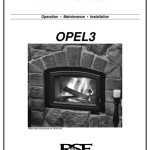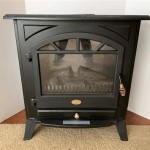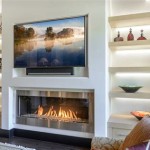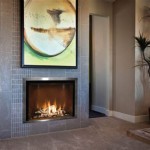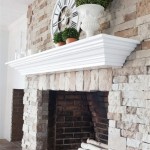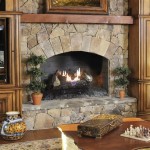Wood Burning Fireplace Insert: How To Use
Wood burning fireplace inserts offer an efficient and aesthetically pleasing alternative to traditional open hearth fireplaces. They are designed to be installed within an existing masonry fireplace, providing improved heat output and reduced energy waste. Understanding the proper operation of a wood burning fireplace insert is crucial for safety, efficiency, and longevity.
This article provides a comprehensive guide on how to use a wood burning fireplace insert effectively, covering essential aspects such as fuel selection, starting a fire, maintaining combustion, and ensuring safety precautions are consistently observed.
Fuel Selection and Preparation
The type of wood used in a fireplace insert significantly impacts its performance. Seasoned hardwood is the optimal choice, offering a higher BTU (British Thermal Unit) output and burning cleaner than softwood. Seasoning involves drying the wood for at least six months, ideally longer, to reduce moisture content. High moisture content in wood results in smoky fires, reduced heat output, and increased creosote buildup in the chimney. Appropriate wood moisture content should be between 15-20%. Firewood moisture meters can assist in measuring the moisture content.
Preferred hardwood species for fireplace inserts include oak, maple, ash, and birch. These hardwoods burn slower and provide a more consistent heat output. Softwoods, such as pine and fir, can be used, but they burn faster, produce more smoke, and contribute to creosote accumulation. When softwood is used, it should be monitored more frequently, and the chimney should be inspected and cleaned more often.
Proper wood preparation involves splitting the logs into manageable sizes. Smaller pieces of wood are easier to ignite and burn more completely. The ideal size depends on the size of the firebox within the insert, but generally, logs should be no larger than 6-8 inches in diameter. Avoid overfilling the firebox; maintaining adequate airflow is essential for efficient combustion. Stack the wood loosely to allow air to circulate around the logs. Avoid packing the wood too tightly, as this will restrict airflow and promote smoldering rather than clean burning.
Starting and Maintaining a Fire
Starting a fire in a wood burning fireplace insert requires a systematic approach. Begin by ensuring the damper is fully open to allow for proper ventilation. Place a layer of crumpled newspaper or fire starters on the floor of the firebox. Arrange small pieces of kindling, such as twigs or small split pieces of wood, on top of the paper or fire starters. Building a small teepee structure with the kindling will facilitate airflow and promote ignition.
Once the kindling is burning steadily, carefully add larger pieces of split wood. Allow the larger logs to catch fire gradually, avoiding smothering the flames. Gradually add more wood as needed to maintain a consistent fire. Monitor the airflow and adjust the air controls to optimize combustion. Most fireplace inserts have adjustable air intakes that regulate the amount of oxygen supplied to the fire. Opening the air controls will increase the fire's intensity, while closing them will reduce the burn rate.
Maintaining a hot fire is critical for efficient combustion and minimizing creosote buildup. Avoid allowing the fire to smolder for extended periods, as this produces significant amounts of smoke and unburned hydrocarbons. Regularly add wood to the fire to maintain a consistent flame. Periodically rake the ashes to ensure proper airflow around the logs. A thin layer of ash on the firebox floor is acceptable, but excessive ash buildup can impede airflow and reduce efficiency.
Safety Precautions and Maintenance
Safety is paramount when operating a wood burning fireplace insert. Install and maintain a carbon monoxide detector in the vicinity of the fireplace. Carbon monoxide is a colorless, odorless gas that can be deadly. Ensure the detector is functioning properly and replace the batteries regularly.
Regular chimney inspections and cleaning are essential to prevent chimney fires. Creosote, a flammable byproduct of incomplete combustion, accumulates in the chimney over time. A buildup of creosote can ignite, leading to a dangerous chimney fire. The National Fire Protection Association (NFPA) recommends that chimneys be inspected annually and cleaned as needed. The frequency of cleaning depends on the amount of wood burned and the type of wood used. A certified chimney sweep can perform inspections and cleanings effectively.
Keep combustible materials away from the fireplace insert. Maintain a safe distance between the insert and any flammable items, such as furniture, curtains, or rugs. Use a fireplace screen to prevent sparks from escaping the firebox. Supervise children and pets when the fireplace is in use. Educate them about the dangers of fire and ensure they understand the importance of staying a safe distance from the fireplace.
Dispose of ashes properly. Allow ashes to cool completely before removing them from the firebox. Store ashes in a metal container with a tight-fitting lid and keep the container away from combustible materials. Wetting the ashes before disposal helps to ensure that any remaining embers are extinguished. Ash can be used in gardens to provide various minerals.
Inspect the fireplace insert regularly for any signs of damage or deterioration. Check the door seal for leaks and replace it if necessary. Ensure that the air controls are functioning properly and that the door latch is secure. Address any maintenance issues promptly to prevent further damage and ensure safe operation.

Why A Wood Burning Fireplace Insert Bethesda Md Service

Why A Wood Burning Fireplace Insert Bethesda Md Service

Wood Burning Fireplace Inserts Insert Installation

Wood Inserts We Love Fire

Ventis Hei240 Wood Burning Insert Rockford Chimney

Should I Use A Fireplace Insert Or Wood Stove To Heat Up My Home

What S Best A Fireplace Stove Or Insert We Love Fire

Lopi Premium Wood Fireplace Inserts Custom Hearth Fireplaces And Stoves

Wood Burning Fireplaces Inserts Full Service Chimney

Fireplace Inserts Explained Typical Sizing Functionality More
Related Posts

